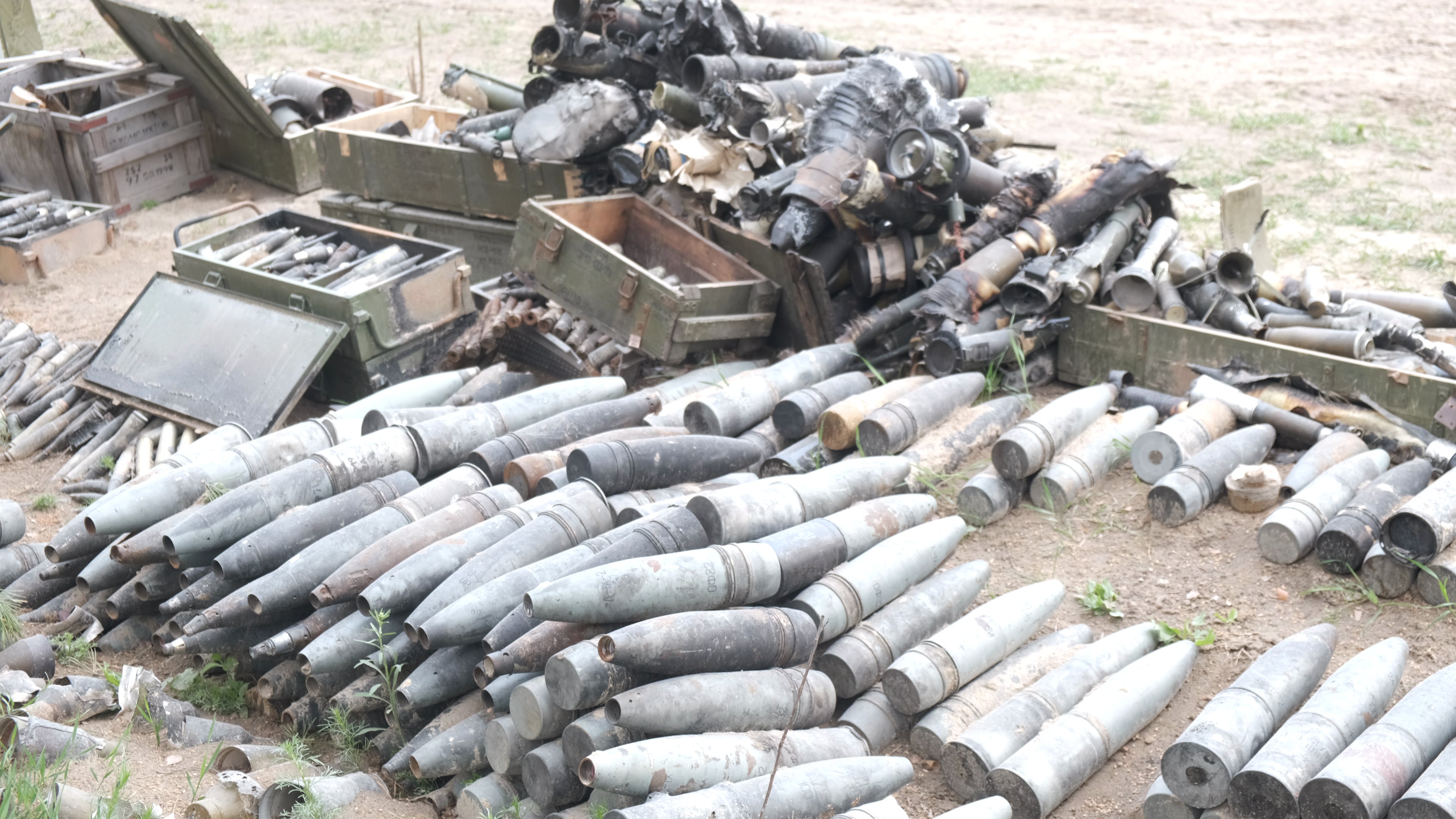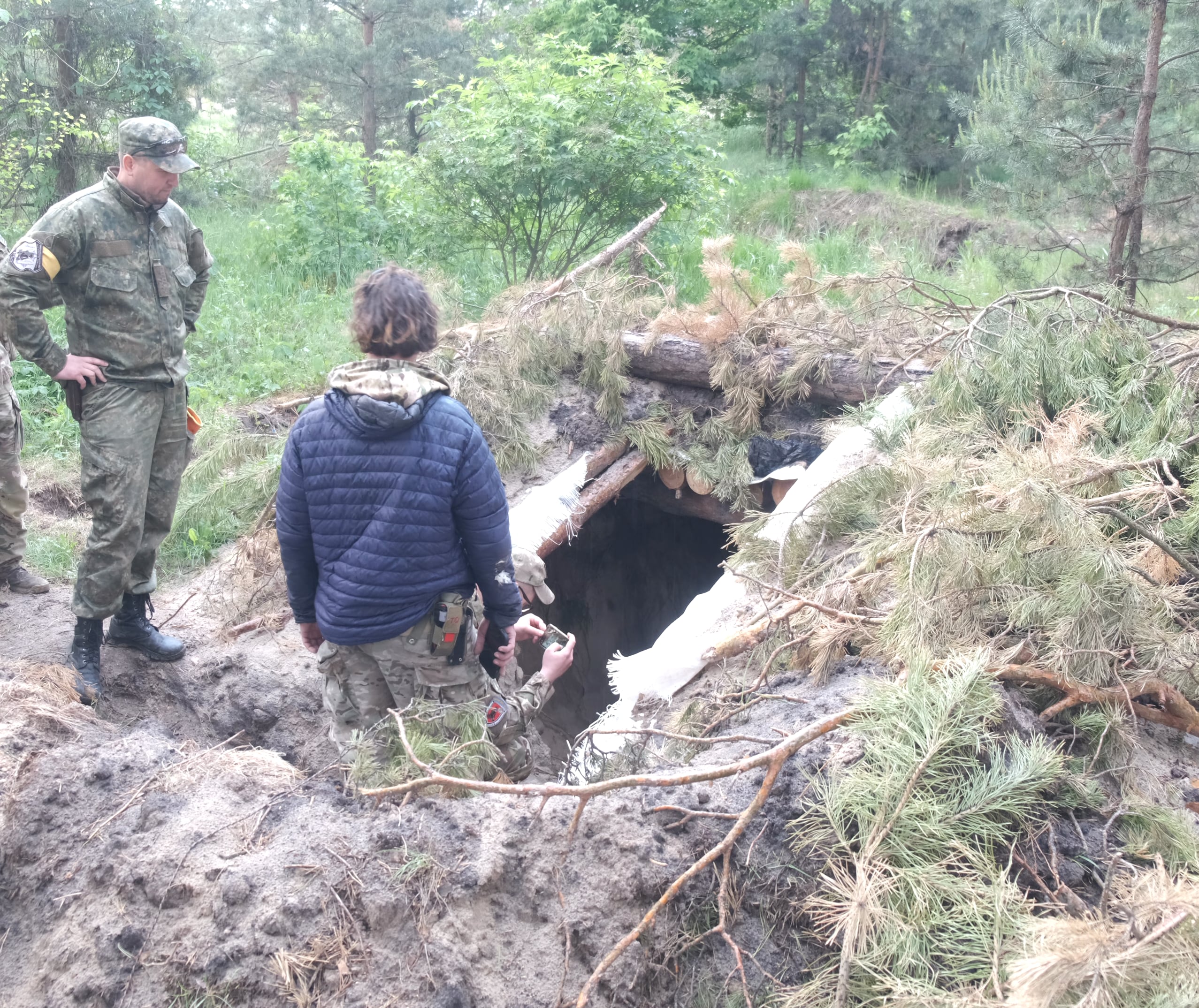A casual observer walking the streets of Hostomel, Irpin and Bucha could be forgiven for mistaking the rubble strewn throughout as caused by an act of God. The pot holes, splintered wood, collapsed roofs and blown over fences can only equate to scenes of a hurricane or tornado to those who are unaccustomed to war. However, no such hurricane or tornado ripped through these border towns northwest of Kiev. They were instead the sites of massive and unrelenting indirect fire barrages. The Russian forces that entered these regions indiscriminately covered whole grid squares with their artillery, mortar and rocket fire.
After the smoke clears and forces leave to fight in other regions, residents of these towns return to rebuild their lives and attempt to salvage what’s left. Unfortunately, a deadly legacy of unexploded and hazardous ordnance often remains behind. With every step forward, residents have to take two steps backward once they encounter a hazardous explosive remnant that halts all construction or free movement.
While most headlines focus on the weapons the United States can provide to Ukraine, less focus has been placed on how the United States can help with demilitarization and rendering safe the hazardous ordnance strewn about the country. This emerging crisis will only continue to worsen and plague Ukrainian villages, fields and daily life long after the war ends.
“International demining experts estimate that Russian munitions may have dud rates between 10% and 30%, meaning massive amounts of unexploded ordnance will remain in the ground for years to come,” Karen Chandler, director of the U.S. State Department’s office of weapons removal and abatement, said in May.
To put into perspective the scale and urgency of the growing unexploded ordnance crisis, these estimates suggest that if the Russians were to fire 100 artillery shells into a village, there could be 30 unexploded projectiles sitting in the rubble for children, women and the elderly to stumble across as they attempt to rebuild.

Compounding the issue is the unstable state of much of the fired ordnance.
Ordnance shot from a weapon system is intended to explode. Many munitions remain in an unstable state in the rubble and can detonate with the slightest of movement or change of position. In other areas, the Russians placed landmines and boobytraps to slow and restrict movement.
Even for the best funded and most highly trained countries, this crisis would be almost insurmountable to its explosive ordnance disposal technicians. In Ukraine, a country that has been plagued with unexploded ordnance since the first Russian invasion in 2014, solving this is an impossible task without assistance.
Proper help and support from non-government organizations and well appropriated foreign aid will be essential for the future of post-war Ukraine in the explosive realm.

A former EOD Officer myself, I observed the Ukrainian police force on one of their disposal training days. The group of individuals had a wide variety of backgrounds. Some of their EOD technicians had very little experience, though others had knowledge that surpassed many experienced American EOD experts.
During my trip in June, we drove out to a site on the outskirts of Hostomel and used an abandoned Russian fighting position as our bunker to initiate disposal explosions.
I was shocked to witness a massive collection of ordnance that represented just a small portion of the ordnance pulled from the surrounding area. Some of the ordnance was unfired and abandoned by Russian soldiers; some of it was little more than scrap metal with the explosives and propellant already burnt out.
I watched a master EOD tech gather a group of soldiers with the aim of training them to dispose of the derelict ordnance. The master trainer divided his manpower into groups and set up four separate explosive charges in holes that showed clear signs of heavy use given their depth.

The goal of that day’s training was to teach new techniques, not to dispose of as much hazardous ordnance as possible.
Even across the language barrier I could understand that the master trainer was employing the proverb “Give a man a fish and he will eat for a day; teach a man how to fish and you feed him for a lifetime.” He knew that teaching his force to dispose of ordnance was a far better use of his time than trying to tackle the unexploded ordnance crisis with Ukraine’s existing manpower.
Trainees initiated the ordnance and the munitions exploded according to plan — although we were much closer than I would have liked or U.S. personnel would have accepted.
Undoubtedly, trainees gained valuable insight. But their mission and training are far from over.
With the United States spending focused on the flashy offensive capabilities going towards the frontline, it is easy to forget about the carnage left behind. In April, Ukraine’s Ministry of Foreign Affairs estimated that 13% of its territory was suspected to contain landmines and unexploded ordnance.
Ukraine will continue to need help and support to rebuild its infrastructure. If the war ceased today the unexploded ordnance crisis would still take years to overcome.
It would be wise of the United States and its strategic partners to plan for this enduring dilemma and appropriate more funds wisely. The Ukrainians are going to need it.
Danny Hecht is a West Point graduate and former EOD officer who recently returned from Ukraine in June 2022. At West Point, he studied defense and strategic studies, as well as Russian. He also deployed to Iraq in 2020, conducting EOD work. In Ukraine, he was doing freelance journalism and photography work specifically focused on his area of expertise — EOD.
Have an opinion?
This article is an Op-Ed and as such, the opinions expressed are those of the authors. If you would like to respond, or have an editorial of your own you would like to submit, please email Military Times Senior Managing Editor Kent Miller.
Want more perspectives like this sent straight to you? Subscribe to get our Commentary & Opinion newsletter once a week.
